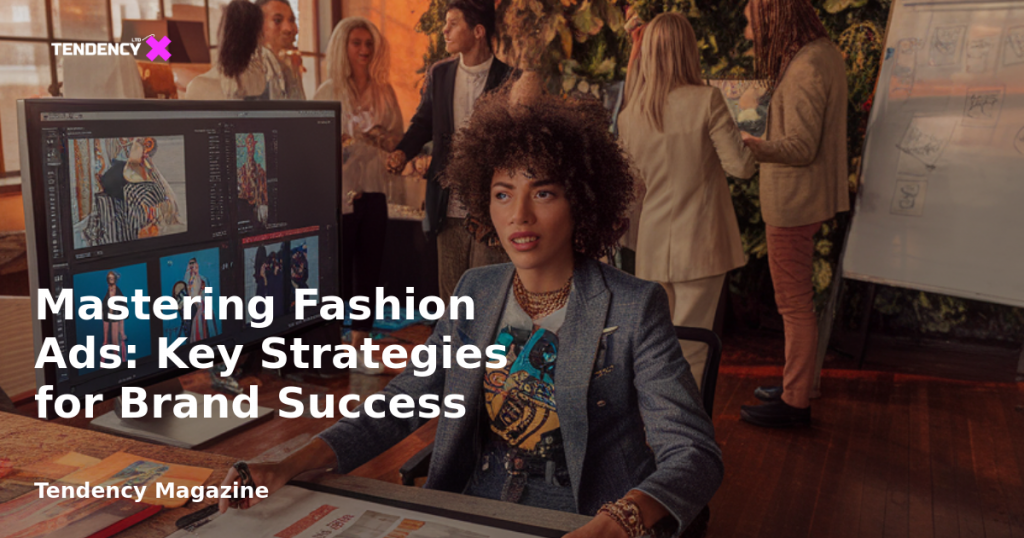Mastering Fashion Ads: Key Strategies for Brand Success

Introduction to Fashion Advertising
Fashion advertising has undergone a significant transformation in recent years. No longer confined to glossy magazine pages, it now spans digital platforms, offering brands the opportunity to connect with audiences on a global scale. These ads are not just about clothing; they’re about selling a narrative, a dream, and a sense of belonging. To succeed in this competitive market, brands—whether luxury or fast fashion—must produce compelling advertisements that captivate and engage their target audience.
Key Attributes of Successful Fashion Ads
Creating effective fashion ads involves more than just showcasing products; it requires a deep understanding of the elements that resonate with consumers. Here are some key attributes that define successful fashion ads:
- Strong Visual Storytelling: In fashion, visuals are paramount. High-quality photography, styling, and production value are essential. Successful ads tell a story through striking imagery, often experimenting with unique locations or photography styles while maintaining brand consistency.
- Authentic Brand Voice: Consistency is key. Ads should reflect the brand’s values and demonstrate an understanding of the target audience’s desires. Building trust through an authentic voice over time is crucial for brand loyalty.
- Cultural Relevance: Tapping into current cultural moments, social movements, or trends can significantly enhance an ad’s impact. Collaborating with cultural icons or influencers can also boost a brand’s visibility and relevance.
- Clear Value Proposition: While creativity is important, ads must also clearly communicate what makes a brand or product special. Aligning the message with the company’s mission ensures clarity and coherence.
- Call-to-Action Integration: Effective ads guide viewers towards taking action, whether it’s visiting a website or making a purchase. Integrating clear calls to action is essential for driving conversions.
Examples of Effective Fashion Ads
Examining successful fashion ads provides valuable insights into strategies that drive engagement and conversion. Here are some notable examples:
- Princess Polly: This brand excels in trend authority and authentic lifestyle capture. Their ads resonate with young women by positioning themselves as trendsetters and capturing genuine, relatable moments.
- PAIGE: Known for its simplified styling and modern balance, PAIGE’s ads promise effortless coordination, appealing to those who seek a relaxed yet refined look.
- Kirrin Finch: Addressing a real problem, Kirrin Finch’s ads focus on inclusivity and empowerment, resonating with nonbinary and gender-nonconforming individuals seeking professional attire.
- Suta: By using urgency tactics and broad occasion coverage, Suta’s ads encourage immediate action and position their products as versatile wardrobe staples.
- Maguire: This brand’s values-driven positioning and effortless versatility make their ads appealing to consumers who prioritize ethical consumption.
- Loewe: Loewe’s ads are characterized by front-and-center product placement and aspirational lifestyle messaging, showcasing luxury with a focus on high-quality visuals.
- Tentree: With impactful messaging and conscientious positioning, Tentree’s ads highlight their environmental mission, appealing to eco-conscious consumers.
- Birdy Grey: By emphasizing affordability and group harmony, Birdy Grey’s ads cater to bridesmaids seeking stylish yet budget-friendly options.
- Life is Good: This brand’s optimistic messaging and values signaling create a feel-good vibe, inviting consumers to be part of a positive community.
Fashion Ads FAQ
- How does fashion marketing work? Fashion marketing taps into emotions, creating desire and aspiration. It involves multiple touchpoints, from ads to influencers, crafting a consistent brand narrative and leveraging trends and cultural moments to build brand loyalty.
- How do fashion brands advertise? Fashion advertising combines traditional and digital strategies. Luxury brands use magazines and billboards, while digital platforms like Instagram and TikTok are crucial for reaching younger audiences. Experiential marketing, such as runway shows and pop-ups, creates memorable interactions.
- Where are the best places to advertise luxury fashion brands? Luxury brands benefit from curated ad placements in high-end fashion magazines, strategic partnerships with luxury hotels, exclusive events, and cultural institutions like art exhibitions and film festivals.
Conclusion
Mastering fashion advertising requires a nuanced approach that combines creativity with strategic market insight. By understanding the key attributes of successful ads and drawing inspiration from effective examples, brands can craft compelling campaigns that resonate with their target audience. As the fashion industry continues to evolve, staying attuned to cultural trends and consumer preferences will be essential for maintaining a competitive edge.
2025 Tendency LTD. All rights reserved.

